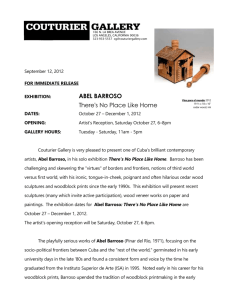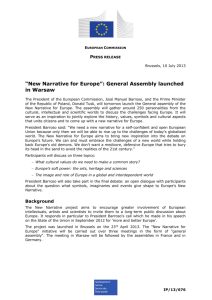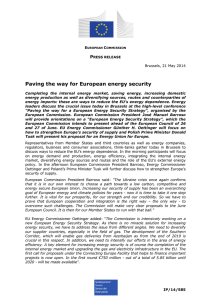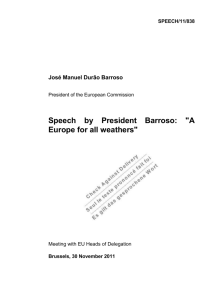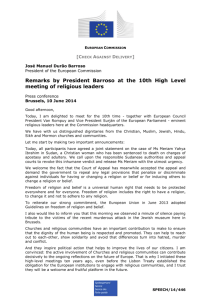evrard-honors352-fa10-lecture20 - Open.Michigan
advertisement
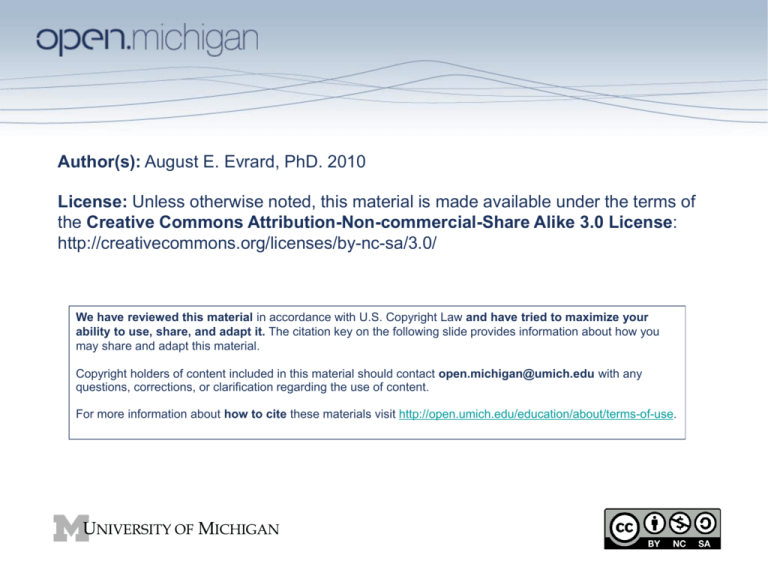
Author(s): August E. Evrard, PhD. 2010
License: Unless otherwise noted, this material is made available under the terms of
the Creative Commons Attribution-Non-commercial-Share Alike 3.0 License:
http://creativecommons.org/licenses/by-nc-sa/3.0/
We have reviewed this material in accordance with U.S. Copyright Law and have tried to maximize your
ability to use, share, and adapt it. The citation key on the following slide provides information about how you
may share and adapt this material.
Copyright holders of content included in this material should contact open.michigan@umich.edu with any
questions, corrections, or clarification regarding the use of content.
For more information about how to cite these materials visit http://open.umich.edu/education/about/terms-of-use.
Citation Key
for more information see: http://open.umich.edu/wiki/CitationPolicy
Use + Share + Adapt
{ Content the copyright holder, author, or law permits you to use, share and adapt. }
Public Domain – Government: Works that are produced by the U.S. Government. (17 USC § 105)
Public Domain – Expired: Works that are no longer protected due to an expired copyright term.
Public Domain – Self Dedicated: Works that a copyright holder has dedicated to the public domain.
Creative Commons – Zero Waiver
Creative Commons – Attribution License
Creative Commons – Attribution Share Alike License
Creative Commons – Attribution Noncommercial License
Creative Commons – Attribution Noncommercial Share Alike License
GNU – Free Documentation License
Make Your Own Assessment
{ Content Open.Michigan believes can be used, shared, and adapted because it is ineligible for copyright. }
Public Domain – Ineligible: Works that are ineligible for copyright protection in the U.S. (17 USC § 102(b)) *laws in
your jurisdiction may differ
{ Content Open.Michigan has used under a Fair Use determination. }
Fair Use: Use of works that is determined to be Fair consistent with the U.S. Copyright Act. (17 USC § 107) *laws in your
jurisdiction may differ
Our determination DOES NOT mean that all uses of this 3rd-party content are Fair Uses and we DO NOT guarantee that
your use of the content is Fair.
To use this content you should do your own independent analysis to determine whether or not your use will be Fair.
Cyberscience:
Computational
Science and the
Rise of the Fourth
Paradigm
Honors 352, Class #0.19
August E. (Gus) Evrard, PhD
Fall 2010
good science from colliding galaxy
clusters
Source Undetermined
Source Undetermined
today
* brief review of term papers
* lecture: Energy and the Future of Green Computing
* group project updates
Final presentations (40 minutes) on 7, 9 December (in 2
weeks!)
* Assignments: blog post and comment on guest lecturers
(see CTools Assignments for details)
midterm papers graded
TITLES:
Theme 0: Secure (and otherwise) Access
-Authorization in Cybersecurity
-Encryption: the History and Future of Computing
-Intellectual Property in the Information Age: Legal
Precedent and New Boundaries
-Scientists' Best Friends Are Pirate
Theme 1: Hardware
-Memristor: Back to the Basics
-The Transistor Revolution
-Smartphones
Theme 2: Methods
-Data-Intensive User Experience Evaluation: Case
Studies on Microsoft’s Customer Experience
Improvement Program and Mozilla’s Test Pilot
-The Rise of AI in Computational Studies
-SETI@home and the Rise of Distributed Computing
-Future of the Scientific Method
-The Science of Social Network Sites - It's History,
Social Implications, and Effects on Research
Theme 3: Other
-John Von Neumann
-Adaptation of Technologies: Benefits of Borrowing
Computational Methods with respect to Natural
Language Processing
guidance on referencing?
* Sweetland Writing Center
* Diana Hacker's Research and Documentation Online
http://www.dianahacker.com/resdoc/
Yes, there are different conventions, but some
are better than others in a specific context.
Some good examples:
- this week’s reading, Datacenter... : embedded numerical style –
yadda [7]
- NAS 2006 report: endnote (superscript) style – yadda7
- next week’s reading, Scholarship in Digital Age:
embedded naming style – yadda (Sevens 2007)
guidance on referencing?
Please see style guide on referencing at http://www.dianahacker.com/resdoc/.
Cyberinfrastructure Energy Crisis
* Commercial Off-The-Shelf (COTS) technology designed for
performance, not efficiency
* basic physical cost: energy to move charge (bits)
* Moore’s law implies more bits to move and process
* DoE projection: `exascale’ (1018 computations/sec) computer
will cost $250-400 million/yr to operate!
extrapolating current trends to year 2016-18, including Moore’s
law
(Jensen and Rodrigues 2010, CISE, 12, no. 6, p.
20)
example math:
Watts needed for
bandwidth
energy per bit
31 picojoules per bit
(31 x 10–12 J/bit)
X
bandwidth
500 petabytes/s
(~4 x 1018 bit/s)
=
total bandwith
power
120 x 106 J/s (or W)
120 MW
Please see original article, “Embedded Systems and Exascale Computing,” by Jensen
and Rodrigues at http://www.computer.org/portal/web/csdl/doi/10.1109/MCSE.2010.95.
@10cent/kW-hr
wide range of processor performance
Jensen and Rodrigues, Computing in Science and Engineering
CSS Fact sheet on Green IT
~$4.5 billion/yr
Educause 2009 article
Please see conclusion section of original article, “Campuses as Living Laboratories for the Greener Future,” at
http://www.educause.edu/EDUCAUSE+Review/EDUCAUSEReviewMagazineVolume44/CampusesasLivingLaborato
riesfo/185217.
activity @ UM
nextgen.umich.edu
ITS datacenter direction
nextgen.umich.edu
nextgen.umich.edu
Warehouse-scale Computers (WSC’s)
goal: efficiency across wide range of compute power
Barroso and Holzle, The Data Center as a Computer: An introduction to the Design of Warehouse-Scale Machines
what is a WSC?
* generic datacenter
– basically a co-location facility (power/cooling/hardware/software)
– singly managed for many clients
– most clients have specialized needs, different (specific)
requirements
– broad scope: multiple, standard OS’s and application suites
difficult to maximize efficiency
* warehouse-scale computer
– single facility for single client
– designed for narrower set of needs, fewer requirements
– often employ custom OS and custom software
easier to maximize efficiency
datacenters & WSC’s are commodity built
Barroso, Luiz Andre and Holzle, Urs. The Data Center as a Computer: An introduction to the Design of Warehouse-Scale Machines, Morgan & Claypool Publishers
node-node network is layered
Barroso and Holzle, The Data Center as a Computer: An introduction to the Design of Warehouse-Scale Machines
poor scaling of bandwidth/capacity
Barroso and Holzle, The Data Center as a Computer: An introduction to the Design of Warehouse-Scale Machines
loads fluctuate (e.g. web services)
Barroso and Holzle, The Data Center as a Computer: An introduction to the Design of Warehouse-Scale Machines
cost analysis for hardware design
Barroso and Holzle, The Data Center as a Computer: An introduction to the Design of Warehouse-Scale Machines
performance scaling: low-end wins @ large N
Barroso and Holzle, The Data Center as a Computer: An introduction to the Design of Warehouse-Scale Machines
typical datacenter power system
Barroso and Holzle, The Data Center as a Computer: An introduction to the Design of Warehouse-Scale Machines
typical heat management
CRAC unit
rack
rack
rack
rack
CRAC unit
floor tiles
Liquid supply
Regents of the University of Michigan
three basic efficiency factors
Barroso and Holzle, The Data Center as a Computer: An introduction to the Design of Warehouse-Scale Machines
Text surrounding above equation removed. For more information,
please see The Data Center as a Computer: An introduction to the
Design of Warehouse-Scale Machines, by Barroso and Holzle, 2009.
Power Usage Effectiveness in 2007
Barroso and Holzle, The Data Center as a Computer: An introduction to the Design of Warehouse-Scale Machines
cooling is a major loss of efficiency
Barroso and Holzle, The Data Center as a Computer: An introduction to the Design of Warehouse-Scale Machines
poor scaling of IT power with load
Barroso and Holzle, The Data Center as a Computer: An introduction to the Design of Warehouse-Scale Machines
how to improve efficiency
* datacenter-level (PUE)
– use passive cooling (NCSA Blue Waters, UC Berkeley CRTF)
– avoid UPS devices (lower Tier level)
– avoid AC/DC conversion
– use green power (Icelandic model)
* rack-level (SPUE)
– avoid local power supplies
– more efficient voltage regulation
* processor/process-level
– speed-variable processors
– embedded, low-power processors (memristors?)
– smarter parallelization / distribution of work
Image of CRTF facility in UC Berkeley removed.
UC Berkeley CRTF heat management
Image of heating/cooling system of CRTF facility in UC Berkeley removed.
factor 2-3 avail. from CPU itilization
Barroso and Holzle, The Data Center as a Computer: An introduction to the Design of Warehouse-Scale Machines
even google needs improvement!
Additional Source Information
for more information see: http://open.umich.edu/wiki/CitationPolicy
Slide 4 (both images): Source Undetermined
Slide 6: A. E. Evrard, University of Michigan
Slide 8: Please see style guide on referencing at http://www.dianahacker.com/resdoc/.
Slide 10: Please see original article, “Embedded Systems and Exascale Computing,” by Jensen and Rodrigues at
http://www.computer.org/portal/web/csdl/doi/10.1109/MCSE.2010.95.
Slide 11: Jensen, David and Rodrigues, Arun (2010). Embedded Systems and Exascale Computing. Computers in Science and Engineering, 12(6).
Slide 12: EPA, Energy Star Program, 2007.
Slide 13: Please see conclusion section of original article, “Campuses as Living Laboratories for the Greener Future,” at
http://www.educause.edu/EDUCAUSE+Review/EDUCAUSEReviewMagazineVolume44/CampusesasLivingLaboratoriesfo/185217.
Slide 14: nextgen.umich.edu
Slide 15: nextgen.umich.edu
Slide 16: nextgen.umich.edu
Slide 19: Barroso, Luiz Andre and Holzle, Urs. The Data Center as a Computer: An introduction to the Design of Warehouse-Scale Machines, Morgan &
Claypool Publishers, 2009
Slide 20: Barroso, Luiz Andre and Holzle, Urs. The Data Center as a Computer: An introduction to the Design of Warehouse-Scale Machines, Morgan &
Claypool Publishers, 2009, Figure 5.7.
Slide 22: Barroso, Luiz Andre and Holzle, Urs. The Data Center as a Computer: An introduction to the Design of Warehouse-Scale Machines, Morgan &
Claypool Publishers, 2009
Slide 23: Barroso, Luiz Andre and Holzle, Urs. The Data Center as a Computer: An introduction to the Design of Warehouse-Scale Machines, Morgan &
Claypool Publishers, 2009, Figure 1.2.
Slide 24: Barroso, Luiz Andre and Holzle, Urs. The Data Center as a Computer: An introduction to the Design of Warehouse-Scale Machines, Morgan &
Claypool Publishers, 2009, Figure 1.3.
Slide 25: Barroso, Luiz Andre and Holzle, Urs. The Data Center as a Computer: An introduction to the Design of Warehouse-Scale Machines, Morgan &
Claypool Publishers, 2009, Figure 2.2.
Slide 26: Barroso, Luiz Andre and Holzle, Urs. The Data Center as a Computer: An introduction to the Design of Warehouse-Scale Machines, Morgan &
Claypool Publishers, 2009, Table 3.1
Slide 27: Barroso, Luiz Andre and Holzle, Urs. The Data Center as a Computer: An introduction to the Design of Warehouse-Scale Machines, Morgan &
Claypool Publishers, 2009, Figure 3.2.
Slide 28: Image on main components of a typical data center removed. For more information, please see Figure 4.1 of The Data Center as a Computer: An
introduction to the Design of Warehouse-Scale Machines, by Barroso and Holzle, 2009.
Slide 29: Regents of the University of Michigan, “Typical Heat Management,” CC: BY 3.0, http://creativecommons.org/licenses/by/3.0/deed.en.
Slide 30, Equation (top): Barroso, Luiz Andre and Holzle, Urs. The Data Center as a Computer: An introduction to the Design of Warehouse-Scale Machines,
Morgan & Claypool Publishers, 2009, Equation 5.1.
Slide 30, Image (bottom): Text surrounding above equation removed. For more information, please see The Data Center as a Computer: An introduction to the
Design of Warehouse-Scale Machines, by Barroso and Holzle, 2009.
Additional Source Information
for more information see: http://open.umich.edu/wiki/CitationPolicy
Slide 31: Barroso, Luiz Andre and Holzle, Urs. The Data Center as a Computer: An introduction to the Design of Warehouse-Scale Machines, Morgan &
Claypool Publishers, 2009, Figure 5.1.
Slide 32: Barroso, Luiz Andre and Holzle, Urs. The Data Center as a Computer: An introduction to the Design of Warehouse-Scale Machines, Morgan &
Claypool Publishers, 2009, Figure 5.2.
Slide 33: Barroso, Luiz Andre and Holzle, Urs. The Data Center as a Computer: An introduction to the Design of Warehouse-Scale Machines, Morgan &
Claypool Publishers, 2009, Figure 5.8.
Slide 36: Barroso, Luiz Andre and Holzle, Urs. The Data Center as a Computer: An introduction to the Design of Warehouse-Scale Machines, Morgan &
Claypool Publishers, 2009, Figure 5.5.

